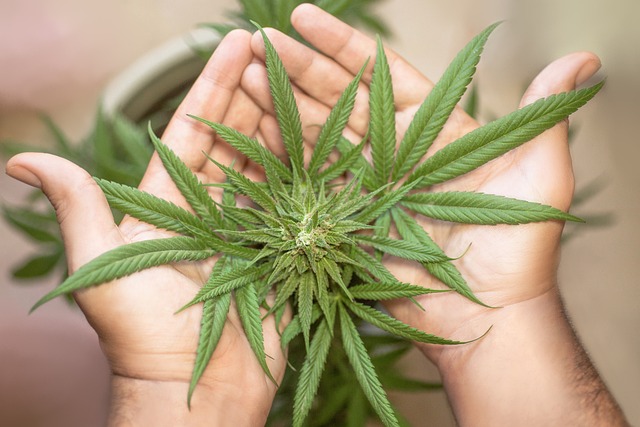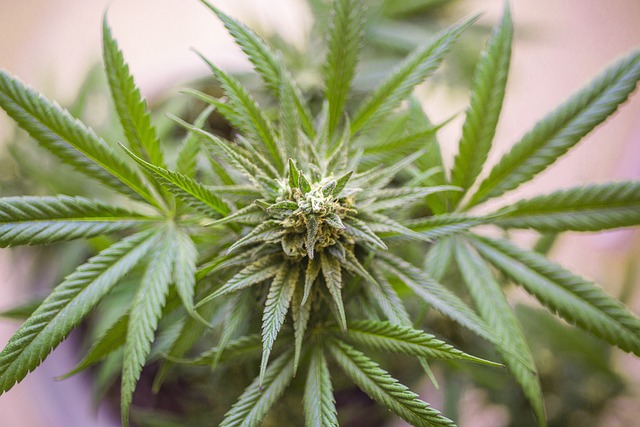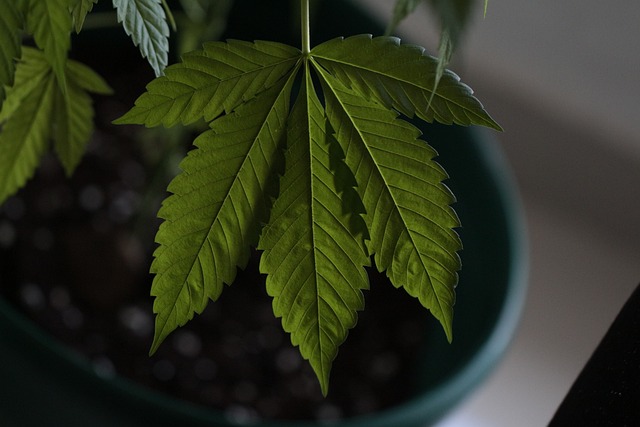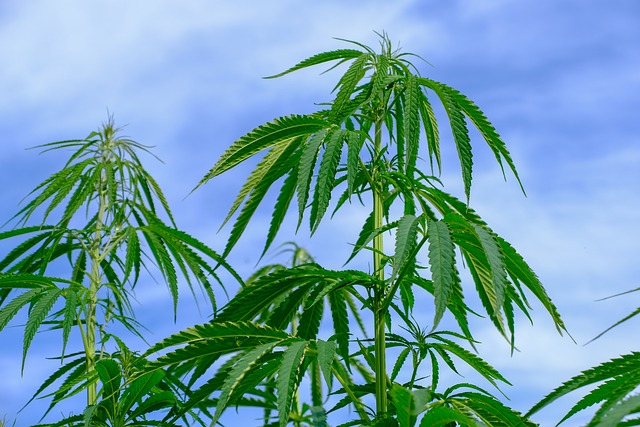The article investigates the differences between THCA bud and CBD bud, two non-psychoactive cannabinoids found in cannabis with distinct health benefits. THCA bud, present in its raw form, is recognized for its anti-inflammatory and neuroprotective properties, potentially aiding conditions like arthritis and neurological disorders without inducing psychoactive effects. CBD bud, on the other hand, is known for its ability to alleviate anxiety, manage pain, and offer antioxidant benefits, with the entourage effect of multiple cannabinoids and terpenes enhancing these properties. THCa buds contain a unique terpene profile that may provide stronger analgesic effects, while CBD buds are rich in terpenes like pinene and linalool, offering benefits for anxiety relief and pain management without psychoactive side effects. The cultivation of each requires specific environmental conditions to optimize their respective cannabinoid profiles; growers must carefully manage factors like temperature, humidity, and nutrients to preserve the THCA or CBD content, ensuring high-quality yields with significant health and wellness effects. Understanding the differences between THCa bud and CBD bud is crucial for those interested in utilizing cannabis for therapeutic purposes, as it allows for informed decisions based on individual health goals and preferences.
Explore the burgeoning landscape of cannabinoid wellness with our latest article, which delves into the therapeutic properties and benefits of THCA (tetrahydrocannabinolic acid) flower. As an alternative to CBD (cannabidiol) buds, THCA buds are gaining attention for their potential effects and unique terpene profiles. We compare these two plant derivatives, offering insights into the entourage effects and how they can influence your well-being. Further, we provide cultivation advice to help you maximize the benefits of THCA flower. Join us as we dissect the science behind THCA and its implications for health and wellness, ensuring a comprehensive understanding of this emerging wellness trend.
- Unveiling the Potential of THCA Flower: A Comparative Analysis with CBD Buds
- The Scientific Breakdown of THCA: Benefits and Effects
- THCA Flower vs CBD Bud: Terpene Profiles and Entourage Effects
- Cultivation Considerations for Maximizing THCA Flower Benefits
Unveiling the Potential of THCA Flower: A Comparative Analysis with CBD Buds

The exploration into the therapeutic and wellness spheres often leads to a comparison between THCA flower and CBD buds, two phytocannabinoid-rich substances derived from the cannabis plant. THCA, or tetrahydrocannabinolic acid, is the raw, non-psychoactive precursor to the well-known psychoactive compound THC, found primarily in raw marijuana flowers. On the other hand, CBD buds are rich in cannabidiol, another non-psychoactive cannabinoid that has garnered significant attention for its potential health benefits.
When considering the effects of THCA flower versus CBD buds, it’s important to understand the distinct interactions each has with the human endocannabinoid system. THCA is renowned for its potential anti-inflammatory and neuroprotective properties, which may be beneficial for conditions such as arthritis and neurological disorders. Its presence in raw cannabis flowers means that it does not induce psychoactive effects, making it a favored choice for those seeking the therapeutic benefits of cannabinoids without altering their cognitive state. In contrast, CBD buds offer a range of benefits including anxiety relief, pain management, and antioxidant properties, as supported by extensive research. The entourage effect, a phenomenon where CBD works in synergy with other cannabinoids and terpenes in the plant, further amplifies its therapeutic potential. Both THCA bud and CBD bud have their unique applications and uses; however, the choice between them depends on individual health goals, legal considerations, and personal preference for the specific cannabinoid profile each offers. As such, understanding the nuanced differences between THCA flower and CBD buds is crucial for consumers looking to harness the beneficial properties of cannabis for wellness or therapeutic use.
The Scientific Breakdown of THCA: Benefits and Effects

Cannabidiolic acid (CBDa) and tetrahydrocannabinolic acid (THCa) are two prominent compounds found in the cannabis plant, each with distinct properties and potential health benefits. THCa, which exists naturally in raw cannabis plants or freshly harvested ones before any heat is applied, has garnered attention for its therapeutic effects without the psychoactive ‘high’ associated with its decarboxylated form, THC. Unlike THC, THCa interacts with the body’s endocannabinoid system by binding to both CB1 and CB2 receptors, which can influence a range of physiological processes without altering one’s state of mind.
Research suggests that THCa may offer various health benefits, including anti-inflammatory, neuroprotective, and analgesic effects. Studies indicate that THCa could be effective in managing pain and inflammation, offering a potentially beneficial alternative to conventional pain medications. The anti-inflammatory properties of THCa are thought to stem from its ability to inhibit certain enzymes and hormones like COX-2 and interleukin-1 beta (IL-1β), which play roles in inflammation and pain response. Additionally, THCa’s potential as an antiemetic makes it a candidate for treating nausea and improving appetite without the psychoactive side effects associated with THC. When comparing THCa bud versus CBD bud, it’s important to note that both offer unique benefits; while THCa may have more potent pain-relieving qualities, CBD is renowned for its wide array of therapeutic applications without intoxicating effects. Users often choose between THCa and CBD based on their specific health needs and preferences.
THCA Flower vs CBD Bud: Terpene Profiles and Entourage Effects

When exploring the differences between THCA flower and CBD bud, it’s crucial to consider the distinct terpene profiles and their respective entourage effects, which play a pivotal role in determining each substance’s unique impact. THCA, or Tetrahydrocannabinolic Acid, exists in raw cannabis and undergoes decarboxylation to become THC when heated. In its acidic form, THCA exhibits a terpene profile that can include myrcene, caryophyllene, limonene, and humulene, among others. These compounds work synergistically with THCA, enhancing its effects, which may include pain relief, anti-inflammatory properties, and potential neuroprotective benefits. The entourage effect of THCA flower is characterized by a balance of psychoactive and non-psychoactive components, leading to an effect that is distinct from THC alone.
In contrast, CBD bud contains cannabidiol (CBD) as its primary non-psychoactive compound, alongside a variety of terpenes including pinene, linalool, and bisabolol. The entourage effect in CBD bud focuses on the synergy between these compounds, which may offer therapeutic benefits such as anxiety relief, anti-seizure properties, and pain management without the high associated with THC. The terpene profile of CBD bud can significantly influence its efficacy and user experience, as it interacts with the body’s endocannabinoid system to produce a wide range of potential health benefits. Both THCA flower and CBD bud offer unique therapeutic properties due to their respective entourage effects and terpene profiles, making them valuable in diverse applications within the cannabis landscape.
Cultivation Considerations for Maximizing THCA Flower Benefits

When cultivating THCA flowers, understanding the differences between THCA bud and CBD bud is crucial for maximizing their potential benefits. THCA, or tetrahydrocannabinolic acid, is the raw form of THC and offers unique effects that can be harnessed through careful cultivation practices. To ensure a high-quality THCA bud, growers must pay close attention to several key factors. Firstly, selecting the right strain with a high concentration of THCA is essential. This means researching and obtaining seeds or clones from reputable breeders who have bred strains to express higher levels of THCA as opposed to CBD.
Growers should also optimize growing conditions for THCA synthesis. This includes controlling environmental factors such as light exposure, temperature, humidity, and nutrient balance. THCA forms primarily under certain light conditions, typically when the plant is exposed to high-intensity light during its flowering stage. Therefore, manipulating the light cycle to extend the vegetative phase can lead to larger, denser buds with higher THCA content. Additionally, maintaining optimal temperatures and humidity levels throughout the growing period can prevent mold and mildew, which can degrade the quality of the buds.
Furthermore, harvesting at peak maturity is vital to ensure the highest concentration of THCA. The THCA will convert to THC as the flower ages or is cured, so timing is everything. After harvest, a gentle and properly regulated curing process can help preserve the benefits of the THCA bud without significant degradation. Comparatively, CBD buds are often cultivated with a focus on high CBD content and a lower ratio of THC to CBD, which can affect the plant’s growth patterns and the care required during cultivation.
In summary, maximizing THCA flower benefits requires careful selection of strains, precise control of environmental factors, and exacting timing for harvest and curing. By focusing on these cultivation considerations, growers can produce THCA buds that offer the desired effects and health benefits associated with this cannabinoid, setting them apart from CBD buds and providing users with a targeted experience.
THCA flower has emerged as a subject of interest within the cannabinoid community, offering potential therapeutic benefits distinct from those of its counterpart, CBD buds. This article has delved into the scientific underpinnings of THCA, highlighting its unique terpene profiles and the entourage effects that contribute to its efficacy. By comparing THCA bud vs CBD bud, readers have gained insights into the cultivation practices necessary to maximize the benefits of THCA flower. As research continues to evolve, the role of THCA in wellness regimens may become increasingly clear, potentially carving out a niche in holistic health strategies. The exploration of THCA flower’s advantages underscores the importance of informed decision-making when incorporating cannabinoid products into one’s lifestyle.
